We love going to the Hunter in general. The valley and its fabulous wineries, the food and desserts and the birdlife, of course. Then there is Hexham Swamp, which is a massive swamp with access to the public via private roads and those people who know the combination of the padlock securing the gates. And then there’s Ash Island, the beaches and really, the mind boggles when one thinks of all the great places birds can be found in the Hunter.
But Hunter Wetlands Center in Shortland is special. It’s an internationally recognised wetland under the Ramsar agreement. There are more than 200 species of birds that have been recorded there and any visit you make, could bring a special sighting on the day. Nothing is guaranteed in the world of the bird photographer.
The wetlands center has a number of walking tracks around ponds, through swamps and small patches of woodland. This means that you can encounter anything from wetland species to forest dwellers.
These are just some of the more common birds you could see and photograph at the wetlands. Let’s dive in!
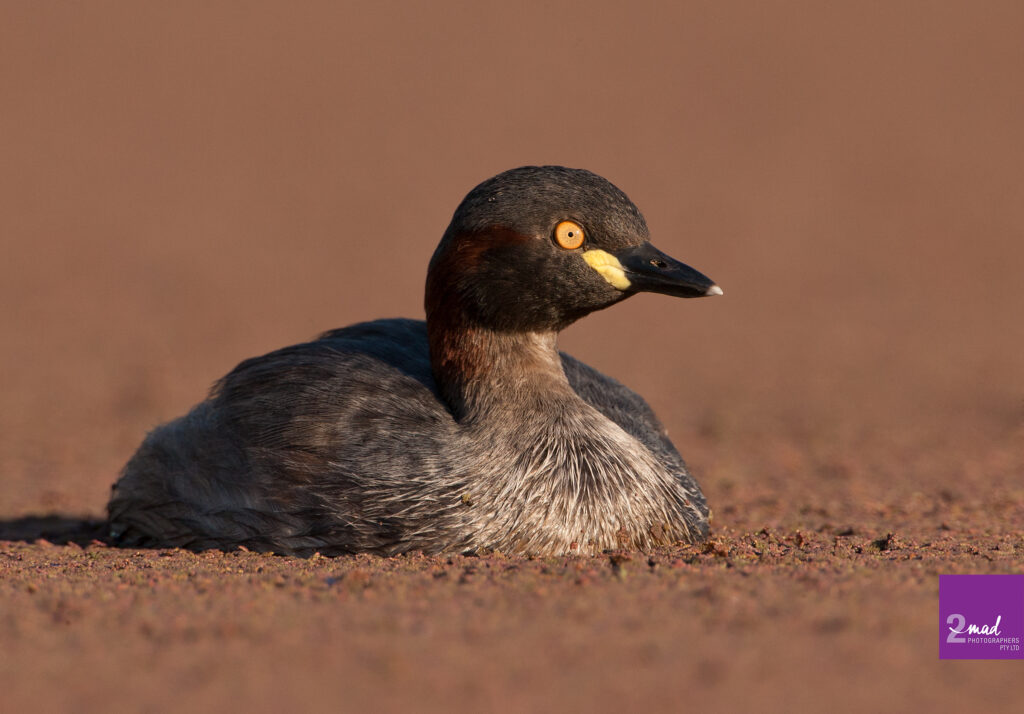
Australasian Grebe (Tachybaptus novaehollandiae) are a small duck-like waterbird, often resident on ponds in your local parks and is most often seen in pairs and they rarely form large flocks. One of two small Australian grebe species, the Australasian Grebe prefer smaller freshwater wetlands or bodies of water, where they feed primarily on fish that they catch underwater. They also feed on insects, molluscs and other invertebrates opportunistically. They can breed up to three times during the warmer months between September and April, but tend to mostly nest during the months of September to November. The nest is a small clump of leaves and other vegetation anchored to a fixed living, or human-made, structure. When chicks are young, they can often be seen riding on the parents’ backs.
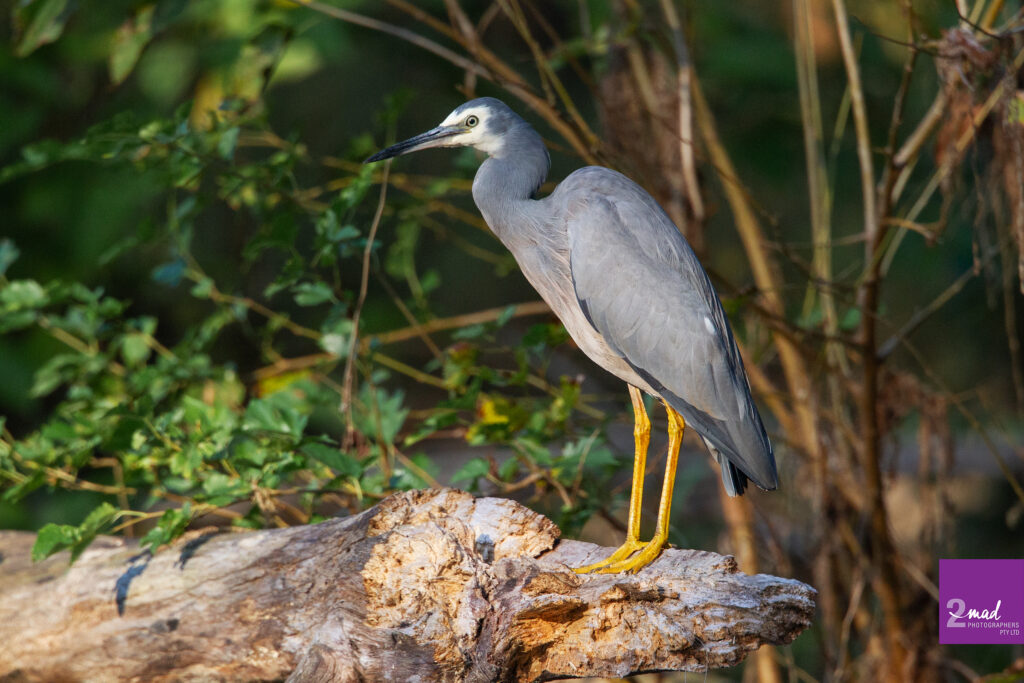
White-faced Heron (Egretta novaehollandiae) (older name is Blue Crane) are instantly recognizable and are arguably the most common heron species seen in urban areas, where they frequent gardens, playing fields, mud flats, crops, often near water. You will often see them perched on fenceposts or on rooves of buildings and even lamp posts.
They were initially considered to be in the Ardea genus, with other egrets, but due to the lack of plumes during the breeding season, that was changed. They stand up to 60-70cm in height and can weigh as much as 600g.
White-faced herons eat most small aquatic animals, including frogs, fish, reptiles and insects. They use different techniques to find food. They may stand still and wait for prey movement. They may walk slowly in shallow water flapping their wings, raking a foot through substrate or they may even chase prey in shallow water while wings are spread wide. These herons are usually solitary and considered territorial during breeding season. They occasionally form large aggregations in ephemeral water bodies after heavy flooding to feed.
They tend to breed during spring in Australia and will also start to raise young after adverse weather events when conditions become suitable.
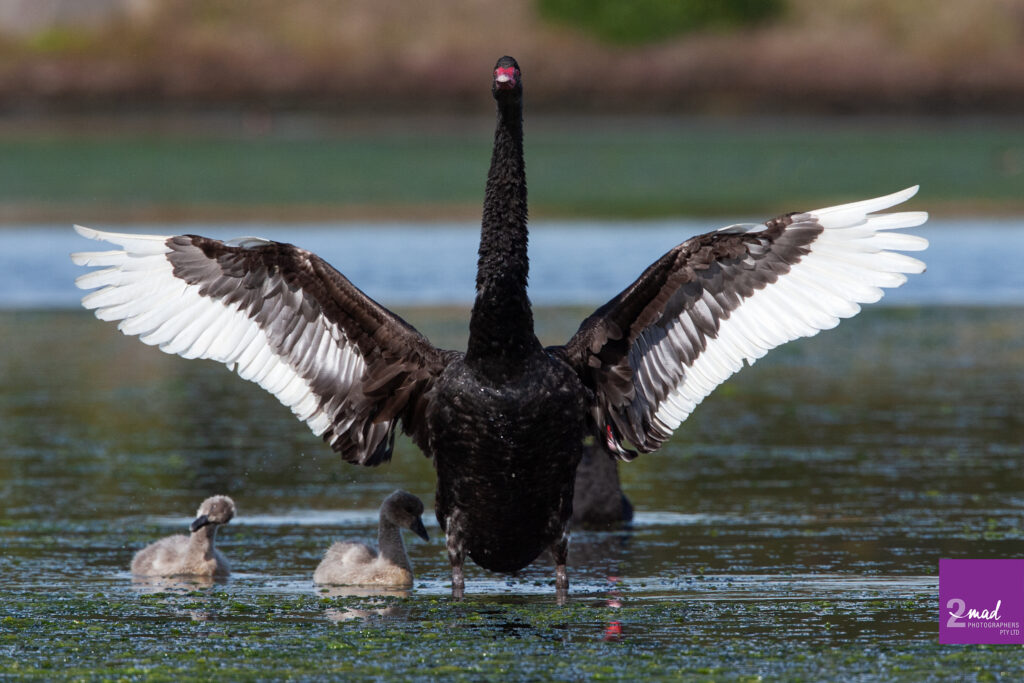
The Black Swan (Cygnus atratus) is a very large waterbird with a huge wingspan, strong wings that can break a person’s leg if struck, and a very melodic woodwind sounding call. Since the only swan in Australia that is native is the Black Swan, I will refer to them as swans from now. Swans can be found in all types of water from fresh to salt and from lakes and ponds to the surf occasionally. They can sometimes gather in groups of thousands, but many smaller ponds in cities have a resident pair that local residents tend to love and care about very much, especially during breeding season when the adorable little cygnets walk around the parklands in a very cute, though awkward manner. Swans are nomadic and often follow environmental conditions that best suit their needs. Both male and female incubate eggs and will often move to areas where water has suddenly reappeared after a weather event and start breeding. If conditions worsen, or dry out suddenly, adults have been known to completely abandon nests and even chicks to return to greener pastures.
Swans are mostly herbivorous feeding on aquatic plants from the waterways they occupy. They are mostly monogamous and about 25% of swans are homosexual, and mostly male. They form a three-way bond with a female and chase her off once the eggs are laid. Nest are often reused year-after-year and are vigorously defended by the adults.
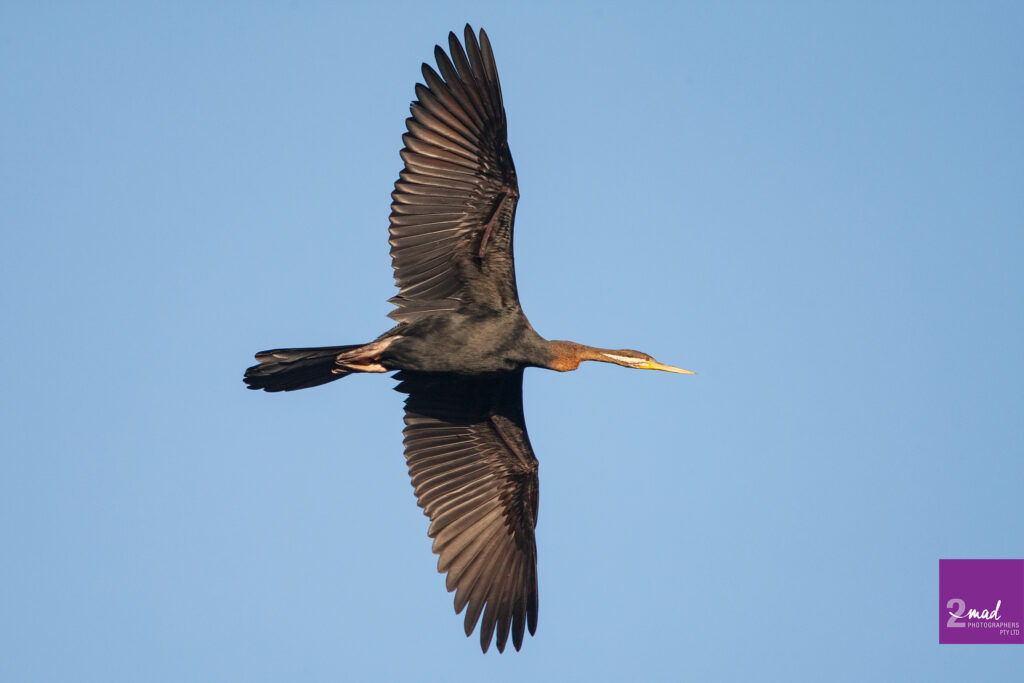
The Australasian Darter (Anhinga novaehollandiae) has been called the snakebird previously, which is rather fitting, since they have a long, snake-like, neck that is about the only part of them sticking out of the water when they are on the surface. Darters are large, almost a meter tall when standing and can weigh over 2.5kg. Mature males are mostly black and females have a lighter underside. They are fierce hunters as they chase fish underwater which are often impaled on the tips of the birds’ beaks. Darter tend to live in freshwater and brackish water habitats that are at least half a meter deep with many fallen trees and logs around which to hunt and the vast majority of their prey are fish that live in these aquatic environments.
In southern Australia they usually breed between August and October and if there are sufficient flood events, they may breed twice. Their nest is usually in a tree on an island, but at least over water, and often within a cormorant colony.

Australian White Ibis (Threskiornis molucca) aka the bin chicken, which is not really a nice name to call this bird that is actually quite lovely when seen in its more natural environments. It is NOT a feral, introduced species, but a native of the Australian continent. As its not-so-nice colloquial name suggests, they can found in cities where they totally take advantage of the wasteful human societies living within them by raiding rubbish bins, refuse and rubbish tips, often becoming soiled and not so attractive to look at. This incredible adaptation made them a real cosmopolitan bird and one of our personal favourites, especially as we think they are a bit of an underdog with people when it comes to handing out love to birds in general.
The Australian White Ibis is 65-75cm tall and may weigh almost 2kg. Their pure white plumage is easily soiled by living in dirty habitats (cities) though when in its pristine form, they are stunning, especially during breeding season, when the upper tail turns yellowish, iridescent pink/purple wash appears on the backs of their heads and they have beautiful red lines under the wings along the main bone line.
They often breed in colonies, on islands, or trees over water. The colony smell can be overwhelming at times and very fishy. Prior to the 1980s there were no breeding records from the Sydney basin, but droughts and the species’ ability to adapt have changed that all well, as we know today.
They are a fascinating bird, despite their less popular status in popular culture. We love them very much!

The Australian Wood Duck (Chenonetta jubata) is a very common species around Australia and is often found in small groups with males and females mixed among them. The scientific name literally translates to goose-duck maned from the Greek words khen for goose and netta for duck, and iubatus (crested) from the Latin word iuba, meaning mane or crest. Males have a dark brown neck and head and also a mane that they can erect, which is why they are still sometimes called Maned Duck. They have flecks of black over a grey throat and chest. Females lack the brown neck and head and have white stripes above and below their eyes. This duck is the only species in the genus Chenonetta.
This species is widely spread throughout Australia and is often seen in fields, paddocks, wetlands, sewage ponds and parks.
They nest in tree hollows where they lay up to eleven eggs in a small nest lined with down. Ducklings jump from the tree once ready and will follow the adults around until adulthood, slowly changing into their final adult plumage.
Wood ducks eat grasses, grain, clover and occasionally insects. They are rarely seen in open water, preferring smaller ponds, dams and waterbodies.
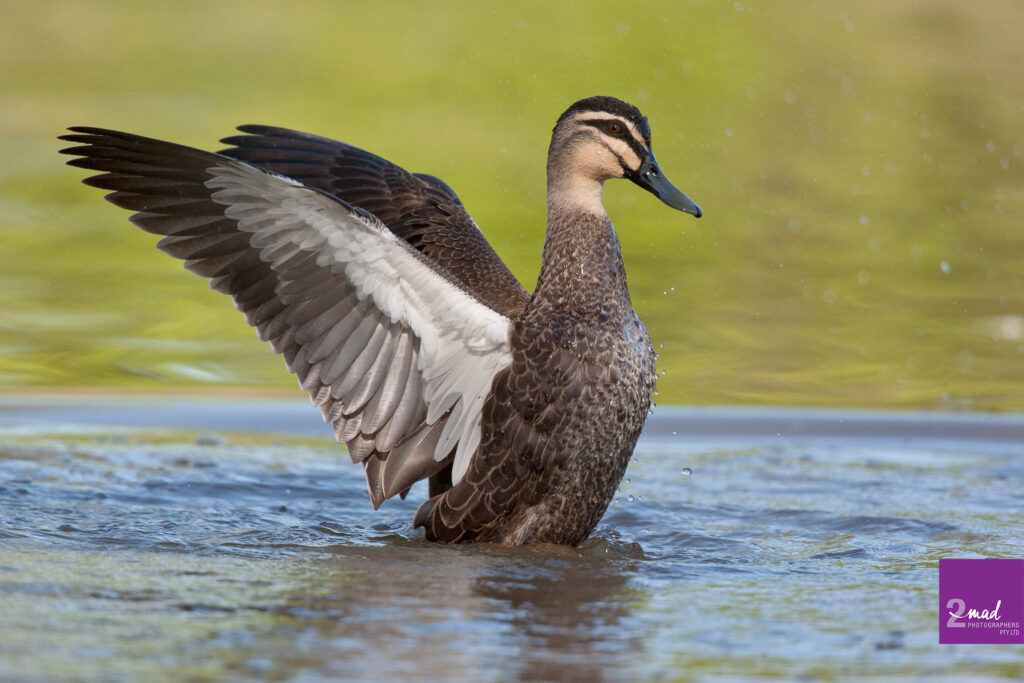
The Pacific Black Duck (Anas superciliosa) is a very common duck and very handsome when seen up close. Anas is the Latin word for duck and superciliosus means supercilious or eye-browed. They are up to about 60cm in length and are often found in parks, ponds, waterways and other water courses where they feed on a mostly vegetarian diet by upending in the water with their butts sticking up as they pull vegetation from below the water’s surface.
Like the wood ducks, these prefer to nest in tree hollows, but will occasionally reuse an abandoned corvid (crow/raven) nest, or as a last resort, nest on the ground. The ducklings are usually flight capable by 58 days of age!
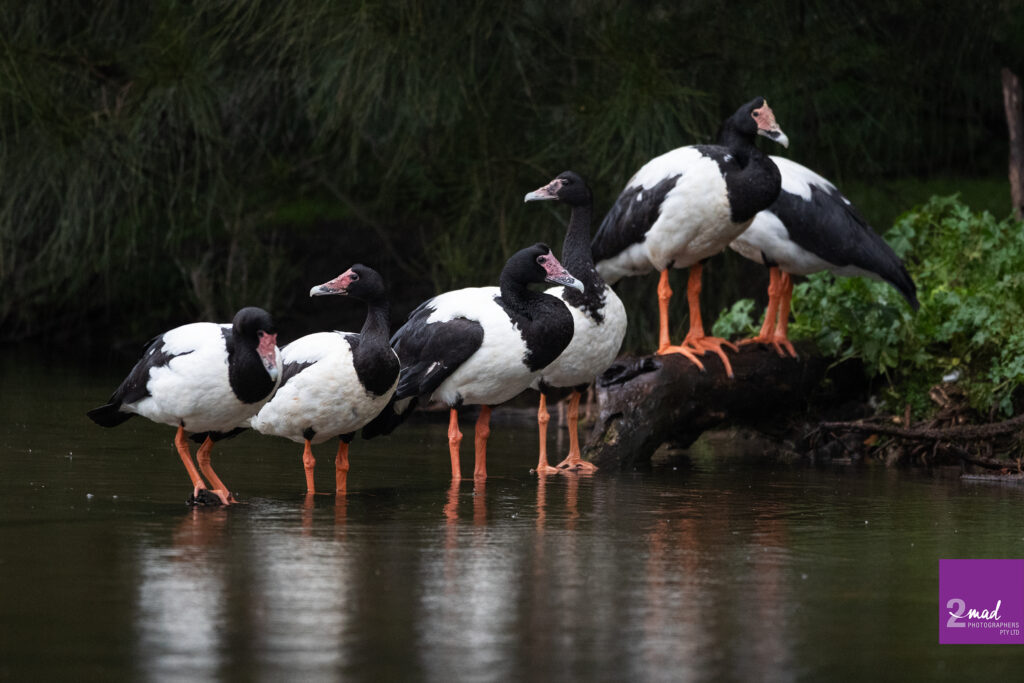
the Magpie Goose (Anseranas semipalmata) is the only living species in the family Anseranatidae. It’s a common bird in northern Australia and in New Guinea. They are prone to wandering when not breeding and while they were relatively common in southern Australia, the draining of many wetlands has caused their significant decline in this previous range. You can’t mistake these birds for any other waterfowl! They are unique, with males bigger than females and they moult gradually, so they never experience total flightless periods, like some other waterbirds, eg the Black Swan.
They are birds of open wetlands, floodplains and swamps where they feed on a mostly vegetarian diet. They usually eat grass blades, wild rice, seeds and spike rush. A male may mate with two females, each female responsible for up to 14 goslings, which are vulnerable to predation, so the large clutch sizes tend to ensure a good survival rate for youngsters.
These birds were highly prized by indigenous Australians as a source of food. In the wetlands center at Shortland, they are often at the main pond as you walk into the complex.

Little Pied Cormorant (Microcarbo melanoleucos) are easily identifiable by their black and white plumage, yellow bill and small size. They also have a small crest, which can be seen at times, when erect. This species can be found almost everywhere in Australia, except the arid interior parts and is a common resident at local ponds in parks, waterways, fresh and saltwater environments.
They are a benthic feeder, usually hunting in shallow water with dive times up to 20 seconds and hunt fish and crustaceans, which they swallow once back on the surface. They may at times place a fish on the water to orientate it properly prior to swallowing head-first.
They breed during spring among other waterbirds in colonies, in trees above water and may raise up to five young birds. One notable thing is that they become very stained over the nesting period and the whitewash around their nests also builds up significantly with time. That is, they are super messy breeders.
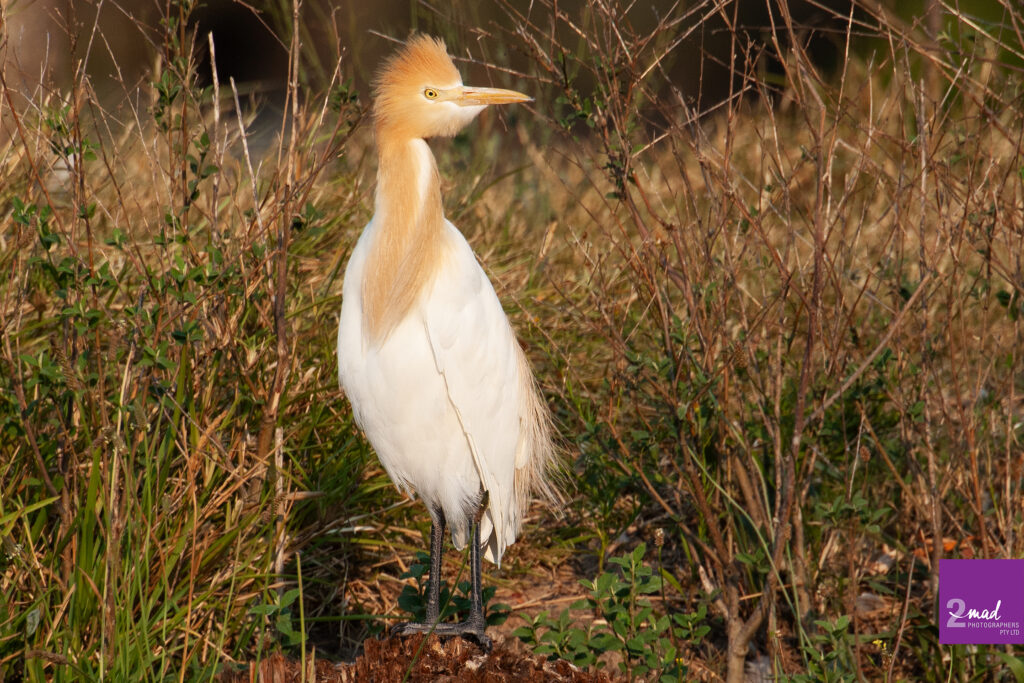
Cattle Egrets (Bubulcus ibis) can be instantly recognizable by their orange plumage when breeding. At other times, it’s a little more tricky, but since they are often associating with bovine animals, there is a good chance that many egrets you see around cattle or horse paddocks are these guys. The most similar egret to these is the Little Egret (Egretta garzetta) but those have black feet. Cattle Egret have greyish, greenish legs and feet that turn orange/red during breeding season, when the orange plumes also appear around the head, shoulders and neck.
They are a stocky heron-type bird and may be as tall as 95cm and weigh as much as 500g. They are well-adapted to foraging on land and have lost the visual ability to allow for the diffraction of water to hunt in waterways, therefore, they are most often found in paddocks and farmland areas, accompanying large farm animals. The animals disturb insects as they graze, and in turn those insects are quickly snapped up by these smart hunters. While they eat a lot of insects, in some areas where they can be found, they may eat the chicks of nesting sea birds, and during sea bird migration, these egrets may wolf down exhausted migratory birds!
These egrets nest in big colonies and when feeding chicks, studies have recorded adult pairs feeding thousands of insects to their offspring in a single day. They can have up to five very demanding young birds begging incessantly for food, so the adults’ work is truly cut out!

The Eastern Great Egret (Ardea modesta) is the giant among Australian herons and egrets. It is the largest of these amazing birds and is very beautiful when in breeding plumage. The legs turn black, its lores turn blue and beautiful plumes grow on their backs, which were prized by humans in the early days of colonization, almost leading to these birds becoming extinct.
These birds grow up to 100cm high and may weigh as much as 1.2kg. One of its characteristics is the long neck, which is up to one and a half times its body length!
They eat many different prey items from fish to reptiles and even small mammals. Anything they can swallow, literally! They often spear their prey with their bill to kill it. They can be found practically anywhere from parks to gardens, drainage lines, wetlands, fresh and saltwater habitats.
The Eastern Great Egret, like other similar birds, breeds in colonies and prefers its nest to be up to 20 meters above ground level. A pair may have up to six young hungry mouths to feed.
There are so many opportunities at the wetlands to see the magnificent wildlife that you just need to get yourself up here and start shooting! It makes for an awesome day out!
If you would like to join us on a weekend adventure of learning how to photograph birds, you are most welcome to express your interest by clicking the button below.